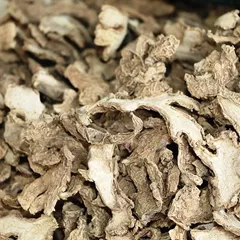Blood Stagnation in the Lower Burner caused by Cold
The information provided here is not a replacement for a doctor. You shouldn't use it for the purpose of self-diagnosing or self-medicating but rather so you can have a more informed discussion with a professional TCM practitioner.
At a glance
Preliminary reading: What is a pattern?
Common symptoms: Painful period Lower back pain Abdominal masses Lower abdominal pain Abnormal uterine bleeding and two other symptoms
Treatment
Common formulas: Shao Fu Zhu Yu Tang
Pathology
Blood Stagnation in the Lower Burner caused by Cold is a pattern of disharmony in Chinese Medicine.
Chinese Medicine views the human body as a complex system that tends toward harmony. A pattern of disharmony is a disorder that prevents that harmony from occurring.
Patterns give rise to symptoms that may at first glance seem unrelated from a Western standpoint but that actually make a lot of sense when one understands Chinese Medicine theory. For instance here Blood Stagnation in the Lower Burner caused by Cold gives rise to such diverse symptoms as abdominal masses, lower abdominal pain, lower abdominal distension and lower back pain (as well as three others).
Diagnosing Blood Stagnation in the Lower Burner caused by Cold
Diagnosing a pattern in Chinese Medicine is no easy feat and should be left to professional practitioners. In particular one has to know how to differentiate between different types of pulses and tongue coatings, shapes and colors as well as learn to read from a long list of seemingly unrelated symptoms.
Main symptoms: Painful period Lower back pain Abdominal masses Lower abdominal pain Abnormal uterine bleeding Lower abdominal distension Dark clots in menstrual blood
Treating Blood Stagnation in the Lower Burner caused by Cold
Herbal formulas used to treat Blood Stagnation in the Lower Burner caused by Cold



The top herbs in Shao Fu Zhu Yu Tang are Szechuan Lovage Roots (Chuan Xiong), Fennel Seeds (Xiao Hui Xiang) and Dried Ginger (Gan Jiang)
Shao Fu Zhu Yu Tang
Source date: 1830 AD
Number of ingredients: 10 herbs
Key actions: Expels Cold and warm the menstruation Blood. Stops pain. Invigorates Blood. Dispels Blood stagnation.
Formula summary
Shao Fu Zhu Yu Tang is a 10-ingredient Chinese Medicine formula. Invented in 1830 AD, it belongs to the category of formulas that invigorate Blood and dispel Blood Stagnation.
Besides Blood Stagnation in the Lower Burner caused by Cold, Shao Fu Zhu Yu Tang is also used to treat Blood Stagnation or Cold in the Uterus.
